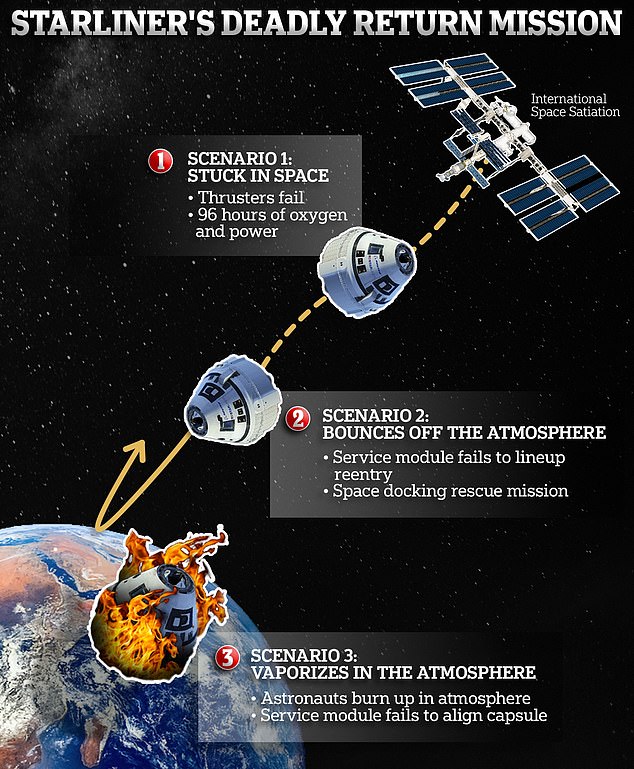Two NASA astronauts were stranded in space for months due to a malfunction in their Boeing spacecraft, but their return to Earth could be even more terrifying.
Suni Williams and Butch Wilmore were only supposed to be on the International Space Station for eight days when they launched on Boeing’s Starliner on June 5.
But a failure in the capsule’s thrusters, crucial to propelling the craft through space, means they have been stranded there for more than two months, and NASA says they may not return until February next year.
The space agency is now deciding whether to persist with the flawed Starliner or launch a rescue mission using SpaceX’s rival craft, which would be hugely embarrassing for Boeing.
Rudy Ridolfi, a former commander of the US Army’s space system, outlined three terrifying scenarios that could occur if they decide to go with the first option, including a worst-case scenario in which the crew would burn up inside the capsule upon reentry.
If NASA decides to use Starliner, Suni Williams and Butch Wilmore could vaporize upon re-entering Earth’s orbit or become trapped floating in space.
Starliner’s problems are centered on the service module, which is like the control center for the entire ship, containing systems that control thrusters, power, as well as water and oxygen for the occupants.
The module, located at the bottom of the capsule, is also critical to aligning the craft for reentry before it is jettisoned into space prior to reentry.
The service module must place the capsule at an inclined altitude so that it can re-enter Earth.
If the angle is off, the craft will bounce off the atmosphere and NASA will have to scramble to get it back into orbit.
If the angle is too steep, there is more friction and a greater chance of burning up in the atmosphere, vaporizing the occupants.
If it is too shallow, the spacecraft could bounce off the atmosphere and be catapulted back into space like a pebble in a pond.
“As long as the capsule is aligned correctly for reentry, everything will be fine,” Ridolfi said.
“(If the capsule is not aligned) they burn up or bounce off into space.”
“If the Starliner service module places the capsule into too steep a reentry window, then the capsule’s ablative heat shield would likely fail,” Ridolfi added.
Five thrusters failed during the 24-hour journey that took the two astronauts to the ISS in June.
A major concern is that more boosters could fail on the return leg, leaving them floating in limbo somewhere between the ISS and Earth.
Based on the amount of oxygen and power capacity Starliner has, the crew would have approximately 96 hours to reactivate the thrusters and land back on Earth.
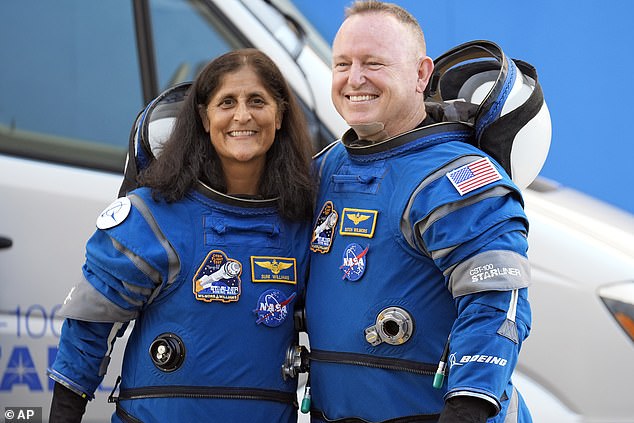
Suni Williams and Butch Wilmore were only supposed to be on the International Space Station for eight days when they launched on Boeing’s Starliner on June 5.
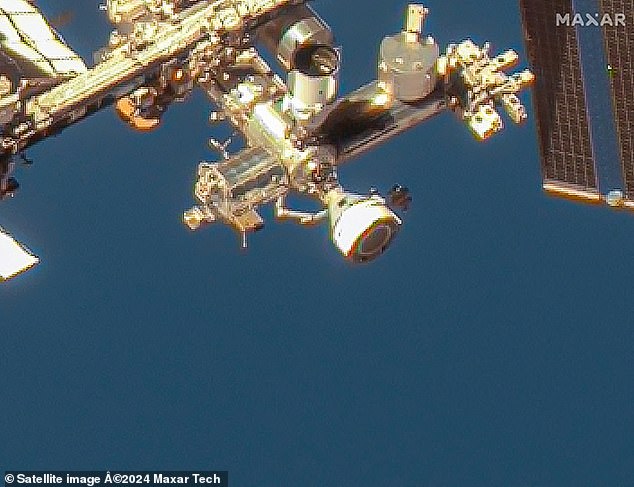
The space agency is now deciding whether to persist with the faulty Starliner or launch a rescue mission using SpaceX’s rival craft.
They would need to determine which thrusters have failed in hopes of sealing them off and still having enough resources to spend a few hours traveling home.
It might be possible for the craft to reach Earth even in this scenario, Ridolfi explained, if the propellant and helium leaks do not persist, but then the service module should function perfectly.
But in the worst case, NASA could be forced to send a rescue ship to the Starliner to recover the astronauts.
The space docking mission, although possible, has only been carried out once in human history and that was to rescue an unmanned spacecraft.
In 1966, Gemini VIII launched with astronauts Neil Armstrong and David Scott to perform the first docking of with an Agena target vehicle.
“NASA knows how to do it, but it takes time,” Ridolfi said.
“If Starliner bounces off the atmosphere, they need to locate it. You can make a rough estimate of where it is, but you need to start making optical and radar observations and work out the orbit it’s in now.
“That could probably take about 180 minutes, say three hours.”
The feat would be achieved by placing a tunnel-shaped structure that would hook onto the Starliner’s hatch, allowing it to be opened without harming the astronauts.
However, Ridolfi said that once Starliner is located, NASA would have to train another team of astronauts to perform the docking mission.
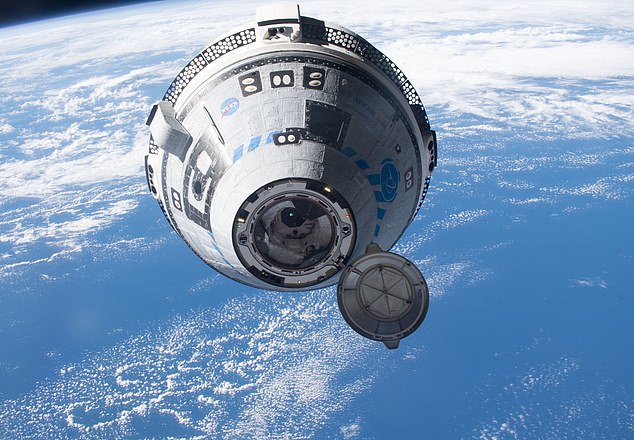
NASA has discussed the idea of programming Starliner to return to Earth unnamed, using autonomous technology, which Ridolfi said is more likely to happen.
While both scenarios are possible, Ridolfi said he believes NASA will choose SpaceX to carry out the rescue mission.
A Crew Dragon capsule carrying two astronauts is likely to launch in September, allowing for two seats for Williams and Willmore.
However, this means that two Russian astronauts will be ejected.
NASA has claimed for months that Starliner was safe and that the astronauts were not stranded, a claim echoed by several media outlets.
The space agency changed its tune on Wednesday, admitting that Boeing’s crippled spacecraft might not survive the trip back to Earth.
The announcement is another embarrassing blow for Boeing, which is grappling with a series of problems affecting its commercial aircraft.
Problems with Boeing’s commercial planes, including turbulence, mechanical issues and tail strikes, have cost the company at least $3 billion.
And NASA awarded Boeing a $4.2 billion contract to build Starliner as a taxi for astronauts to the ISS.
A meeting this week of NASA’s Commercial Crew Program, which oversees Starliner, ended with some officials disagreeing over a plan to accept Boeing’s test data and use Starliner to bring astronauts home.
“We didn’t conduct a survey that would lead to a conclusion,” said Commercial Crew Program chief Steve Stich.
“We heard from a lot of people who had concerns and the decision was not clear,” added Ken Bowersox, NASA’s chief of space operations.
Tuesday marked 60 days that the Starliner crew had been in space, far longer than the planned eight-day mission.
NASA and Boeing have been working tirelessly to test for ground problems to determine the safety of Starliner, which suffered at least five helium leaks and lost five of its 28 boosters.
Last week, Boeing said it “remains confident in the Starliner spacecraft and its ability to safely return its crew.”
Testing by Boeing so far has shown that four of the Starliners failed in June because they overheated and shut down automatically, while other boosters reactivated during testing appeared weaker than normal because of some restriction in their fuel.
Ground tests conducted in late July at the White Sands Missile Range in New Mexico helped reveal that overheating of the boosters causes a Teflon seal to deform, clogging the booster tubes and weakening their thrust.
“I would say that increased the level of discomfort and not having a full understanding of the physics of what’s going on,” Stich said, describing why NASA now seems more willing to discuss a Crew Dragon contingency after previously downplaying such a prospect to reporters.
Starliner lifted off June 5 at 10:52 a.m. ET from Cape Canaveral Space Force Station in Florida with a leak that forced it to be canceled in May.
The crews detected a valve leaking helium and aborted the mission.
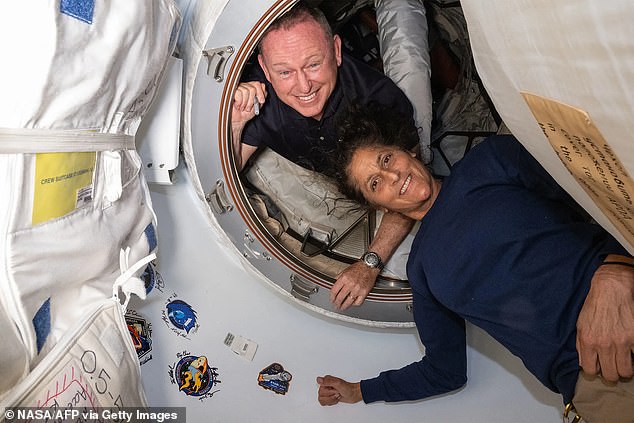
NASA and Boeing have worked tirelessly to test for ground issues and determine the safety of Starliner, which suffered at least five helium leaks and lost five of its 28 boosters. Butch Wilmore and Suni Williams have been in space for more than 60 days.
Engineers suspected the problem stemmed from a faulty rubber seal the size of a shirt button, and said that even if the leak worsens, it could be controlled in flight, and set the next launch for June 1.
However, Starliner was hit by another set of mishaps when the capsule was automatically stopped minutes before takeoff by a computer-controlled abort system. outside.’
Starliner has found five flaws in its 28 maneuvering thrusters, five leaks of helium gas meant to pressurize those thrusters and a slow-moving thruster valve that indicated past unfixed problems since launch.
When Starliner came close to the space station for docking on June 6, five thruster failures prevented the spacecraft from making a close approach until Boeing came up with a fix.
Over the past few weeks, Boeing has been conducting thruster tests on the ground and in space to understand why five boosters failed before Starliner’s arrival at the space station.
All but one of them were functional again. Helium leaks were also detected in the capsule’s propulsion system.

